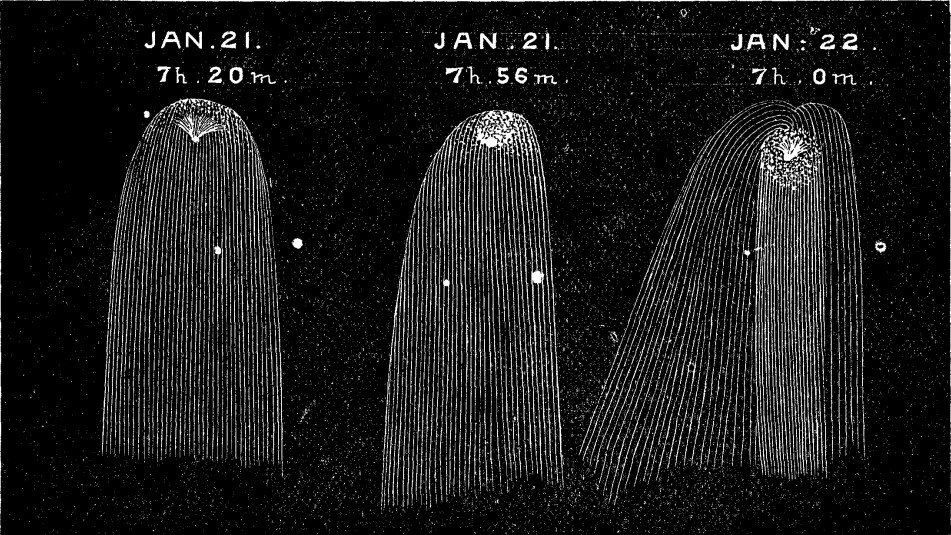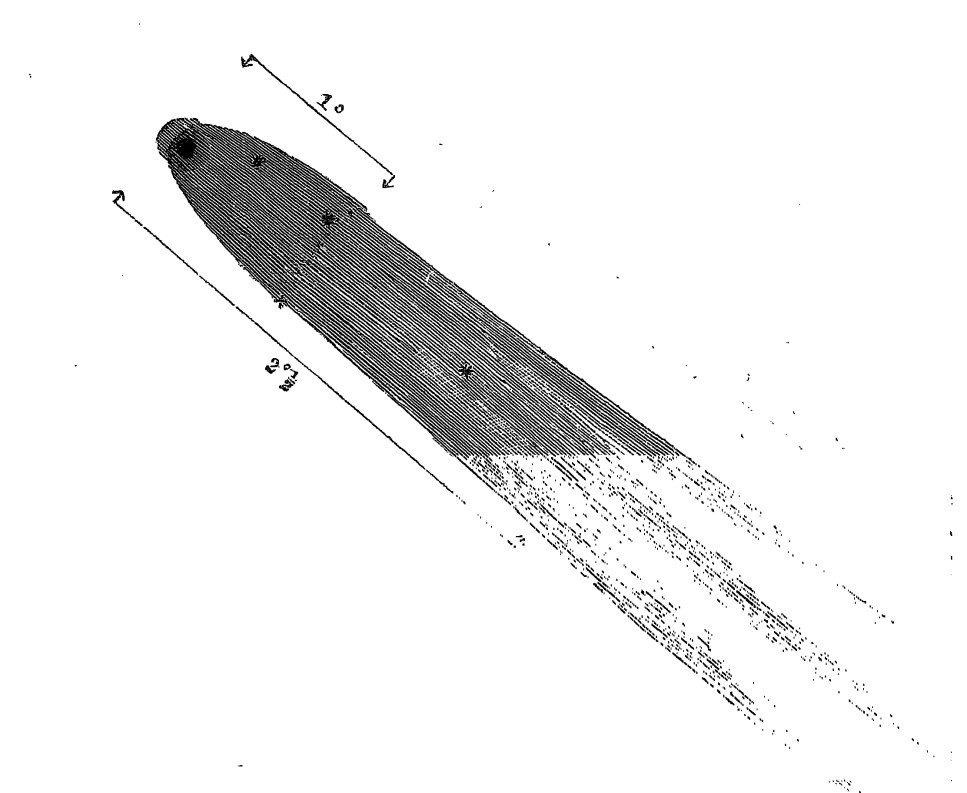Pons-Brooks: A comet for the centuries.
When David Rossetter and I began our observing session at the Tucson Amateur Astronomy Association’s Chiricuaha Astronomy Complex on the evening of August 5, 2023, we did not expect that we would be treated to an evening of cosmic history. That was the night we glimpsed Comet Pons-Brooks, a comet with an orbit that, like Halley’s comet, takes almost a human lifetime to orbit the Sun .I might have spotted it the night before, but on this night David and I saw the same thing, a spot of haze in the darkness. It was a faint misty cloud that bears the names of two of the most famous comet discoverers in all history, a spot of haze with quite a story to tell.

Comet Pons-Brooks was first identified by Jean-Louis Pons, the great French comet hunter, during the summer of 1812. In the late summer of 1883, on its subsequent pass around the Sun, it was rediscovered by another famous comet hunter, William Robert Brooks. I first encountered Brooks in a Sky & Telescope article I read in the second issue I received, at age 14, in April 1963. As I digested the story, I learned how Brooks might have politely entertained a visitor to his observatory, and how that visitor eventually learned that Brooks was one of the world's most famous comet discoverers. As I relished these words, I foresaw myself, some day, also as a hunter of comets. Not a discoverer, because that would be hard. But as a hunter, that's easy. Those ideas stayed with me until December 17, 1965, when I began my program of searching for comets. Since then, my own life has been punctuated by several sparks of cometary light, as each new comet added brightness to the field of my telescope. I joined a group of people linked not by nation, nor either by continent, but by being citizens of the world united by a love of comets.
Emboldened by the offer by Hulbert Harrington Warner of an award of $200 for each comet discovered, Brooks managed to find three comets within five weeks of each other, on April 17, April 30, and May 22 , 1886. He must have known how his colleague Edward Emerson Barnard built his “comet house” partly out of funds also earned from Warner’s award. (The Warner prize has survived through history. The Astronomical Society of the Pacific offered its “Donohoe Comet Medal” for a time, and later Roger Tuthill gave a plaque, and now there exists the Edgar Wilson Award, which is sponsored by the Central Bureau for Astronomical Telegrams [CBAT] of the International Astronomical Union.)
 Like all serious comet hunters, Brooks was far more interested in discovering comets than in the money he could earn from these finds. In later years his success as a a comet hunter earned him a professorship in astronomy at Hobart College in Geneva, New York. With Brian Marsden’s 1979 Catalogue of Comet Orbits as a guide, we can surmise that Brooks discovered a minimum of 22 comets in his lifetime.
Like all serious comet hunters, Brooks was far more interested in discovering comets than in the money he could earn from these finds. In later years his success as a a comet hunter earned him a professorship in astronomy at Hobart College in Geneva, New York. With Brian Marsden’s 1979 Catalogue of Comet Orbits as a guide, we can surmise that Brooks discovered a minimum of 22 comets in his lifetime.
Despite this remarkable accomplishment, Brooks is only the second most prolific comet finder in world history, The winning ticket goes to Jean-Louis Pons himself, who was “the first “discoverer” of Comet Pons-Brooks. Truly, Pons was also not the first. This comet might have been observed by Chinese astronomers in the late summer of 245 CE, then definitely by the Chinese in 1385, and in 1457 by Paolo del Pozzo Toscanelli. Pons today is considered to have discovered about thirty comets. Over the decades I observed a second Pons periodic comet, Pons-Gambart, in January 2013. By the way, Pons had a most humble and trusting nature, and in his younger years he was ridiculed by astronomers who should have known better.
These days, it is almost impossible for an individual to discover more than half a dozen comets. My total is 23, but as CBAT director Dan Green (possibly correctly) stated, “he discovered 9 comets and lucked out on 11 more,” before graciously adding Comet Shoemaker-Levy 9 to my total.
Pons and Brooks shared a passion for telescopes and the fleeting comets they could detect parading about the sky. I like to imagine that finding new comets was secondary to their pure enjoyment of the night sky, its treasures, and the secrets that it infrequently shared with those people who truly lived, and live, for its precious hours of darkness.
Image credit: H.C. Wilson, E.E. Barnard
